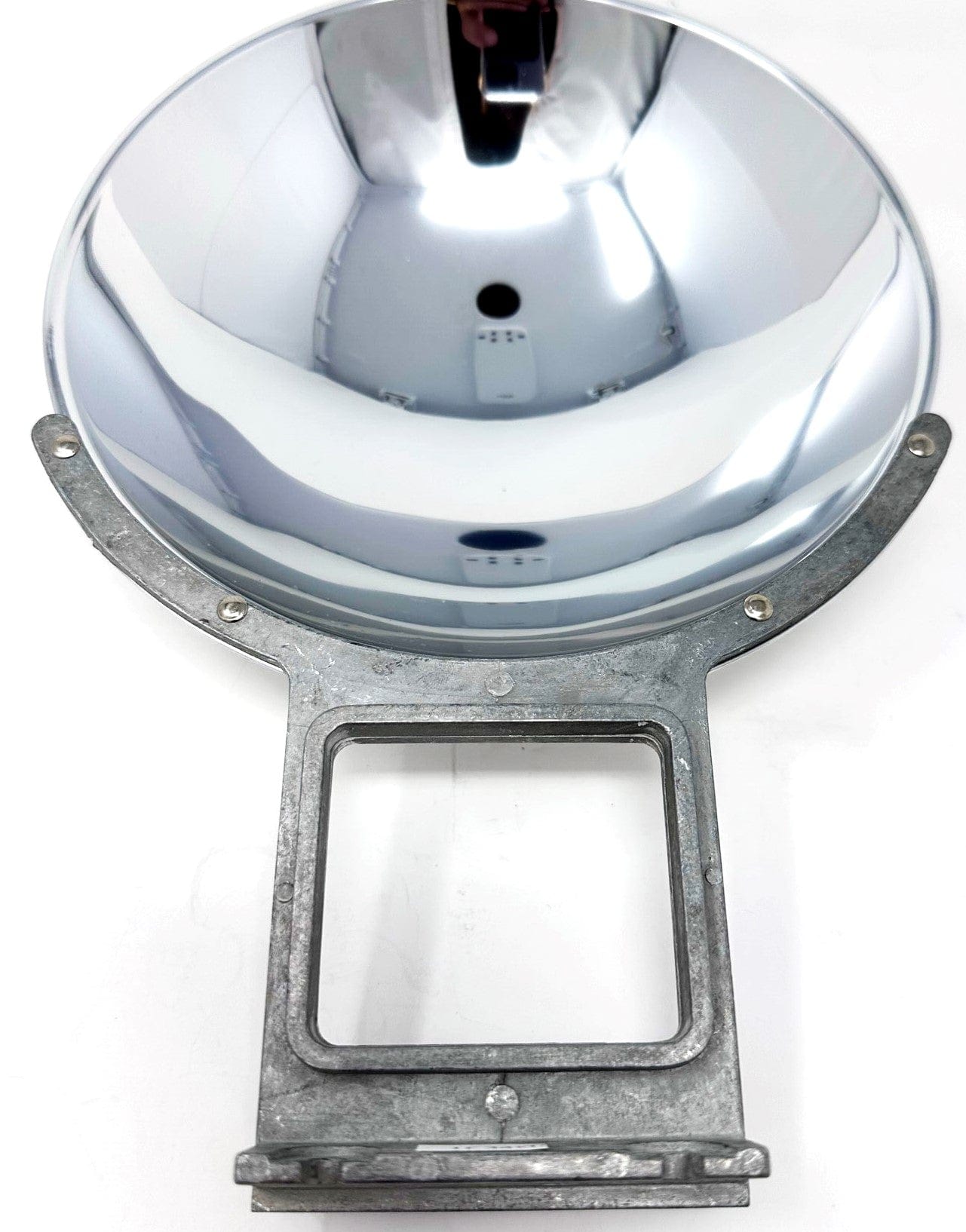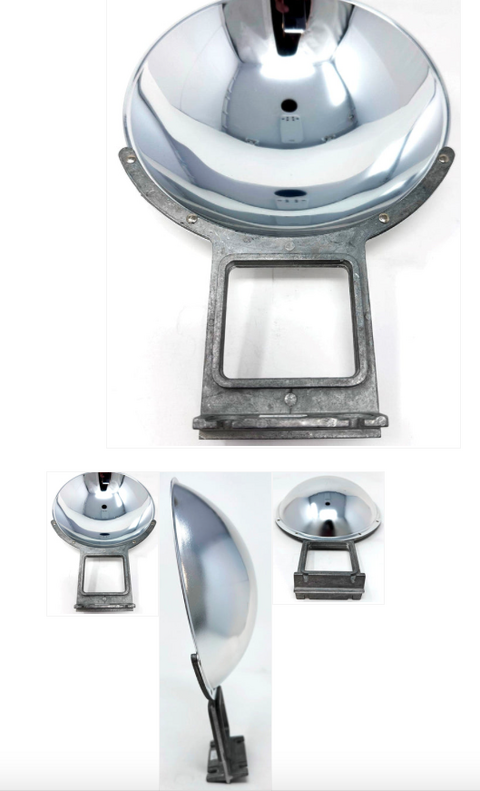Well... I tell myself I have enough projects and I tell myself I'm running out of storage, but things keep coming my way. Today a capitol spot, tomorrow it could be a Trouper... oh wait. I plan on turning this spot into a display piece. The goal is to get it as close to its original condition as possible, and then non-destructively throw a much smaller modern lamp in it for some light. It seems fairly complete, but every bit of marketing material I can find mentions similar models having a reflector. On this fixture there is no obvious mounting point for a reflector, best I can tell it probably clamped onto the rod that moves the base around... if it ever had a reflector in the first place. It's the only real problem I have to overcome on this project, the thing mostly just needs a good teardown and re-paint. I would love to know if this fixture originally had a reflector, and if it did, what I might use as a replacement. A 65q reflector came to mind originally, but I suspect it will be far too small for the task at hand.
As always, updates will come as I make progress on the project.



As always, updates will come as I make progress on the project.





